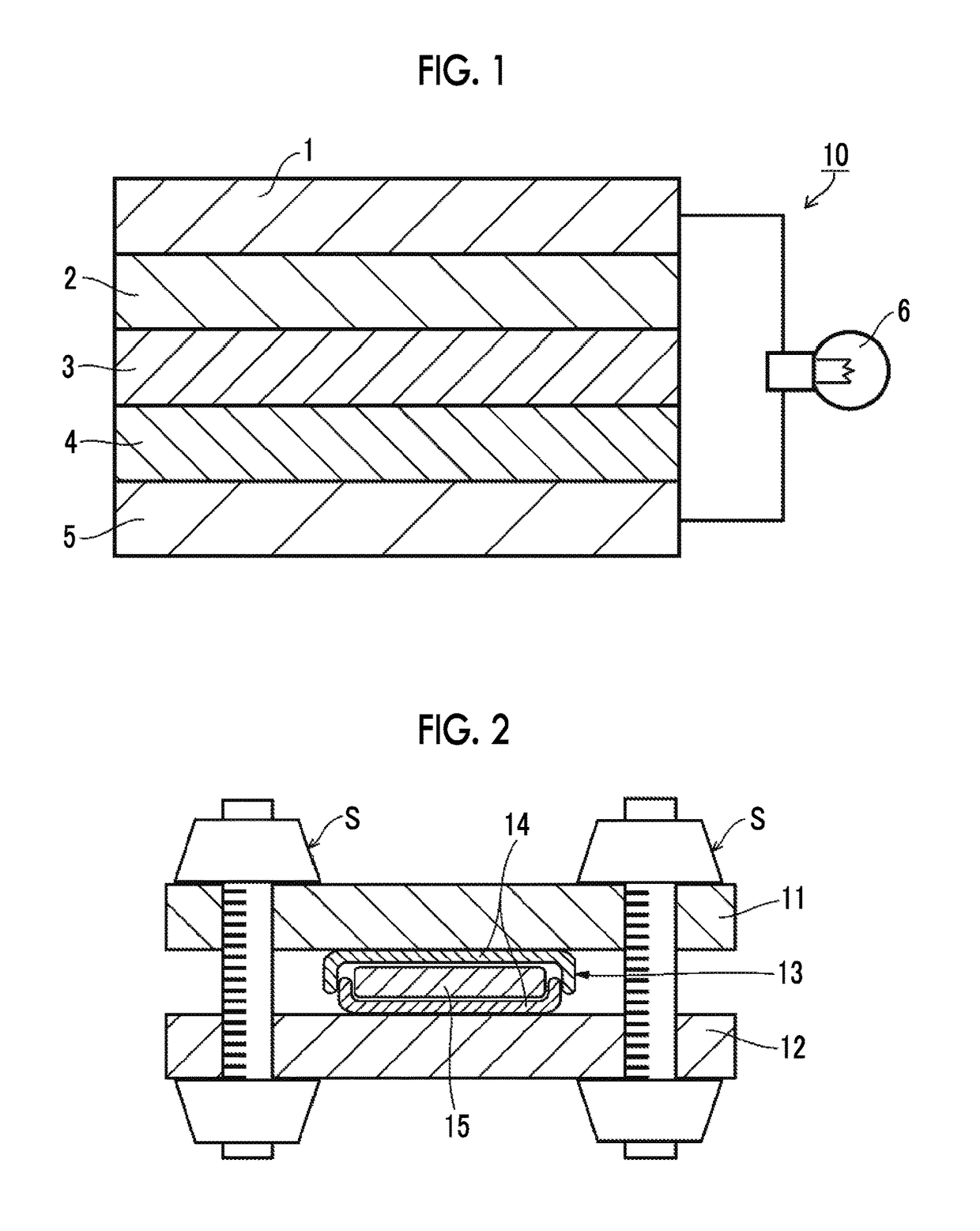Solid electrolyte composition, mixture, complexed gel, electrode sheet for all-solid state secondary battery, all-solid state secondary battery, and methods for manufacturing solid electrolyte composition, complexed gel, electrode sheet for all-solid state secondary battery and all-solid state secondary battery
- Summary
- Abstract
- Description
- Claims
- Application Information
AI Technical Summary
Benefits of technology
Problems solved by technology
Method used
Image
Examples
example 1
—Preparation of Solid Electrolyte Composition—
[0387](1) Preparation of Solid Electrolyte Composition (K-1)
[0388]180 zirconia beads having a diameter of 5 mm were injected into a 45 mL zirconia container (manufactured by Fritsch Japan Co., Ltd.), and an inorganic solid electrolyte LLZ (Li7La3Zr2O12, lithium lanthanum zirconate, average particle diameter: 5.06 μm, manufactured by Toshima Manufacturing Co., Ltd.) (9.0 g), the low-molecular-weight gellant (A-1) (0.3 g), PVdF-HFP (polyvinylidene fluoride-hexatluoropropylene copolymer, manufactured by Arkema K. K., mass average molecular weight: 100,000) (0.3 g) as a binder, and toluene (15.0 g) as a dispersion medium were injected thereinto. After that, the container was set in a planetary ball mill P-7 (trade name) manufactured by Fritsch Japan Co., Ltd., the components were continuously stirred at a temperature of 25° C. and a rotation speed of 500 rpm for two hours, thereby preparing a solid electrolyte composition (K-1).
[0389](2) Pre...
example 2
[0440]
[0441]Production of Gel (Z-1)
[0442]One gram of the low-molecular-weight gellant (A-3) was weighed in a 100 mL three-neck flask, toluene (49.0 g) was added thereto, and the components were heated and dissolved at 100° C. In the case of being cooled in the air at room temperature (25° C.) for three hours, the solution was gelatinized, thereby obtaining gel (Z-1).
[0443]Production of Gel (Z-2)
[0444]One gram of the low-molecular-weight gellant (A-3) was weighed in a 100 mL three-neck flask, dehydrated heptane (47.0 g) was added thereto, and the components were heated and dissolved at 100° C. in an argon atmosphere. The sulfide-based inorganic solid electrolyte (Li—P—S-based glass) (2.0 g) synthesized above was added thereto, and furthermore, the components were continuously heated and stirred for one hour. In the case of being cooled in the air at room temperature (25° C.) for three hours under stirring, the dispersion solution of the sulfide-based inorganic solid electrolyte was g...
PUM
| Property | Measurement | Unit |
|---|---|---|
| Percent by mass | aaaaa | aaaaa |
| Percent by mass | aaaaa | aaaaa |
| Melting point | aaaaa | aaaaa |
Abstract
Description
Claims
Application Information
 Login to View More
Login to View More - R&D
- Intellectual Property
- Life Sciences
- Materials
- Tech Scout
- Unparalleled Data Quality
- Higher Quality Content
- 60% Fewer Hallucinations
Browse by: Latest US Patents, China's latest patents, Technical Efficacy Thesaurus, Application Domain, Technology Topic, Popular Technical Reports.
© 2025 PatSnap. All rights reserved.Legal|Privacy policy|Modern Slavery Act Transparency Statement|Sitemap|About US| Contact US: help@patsnap.com



